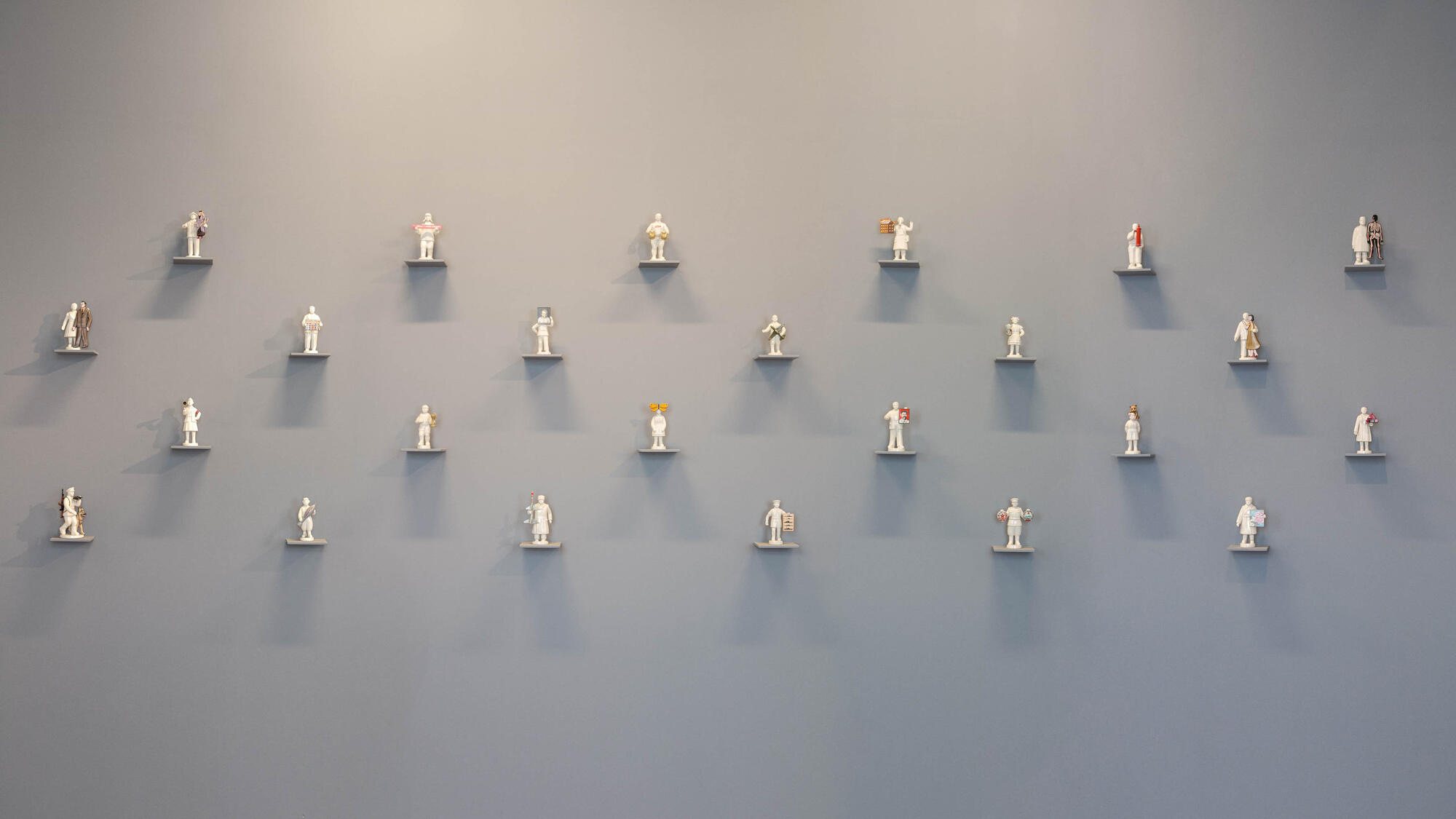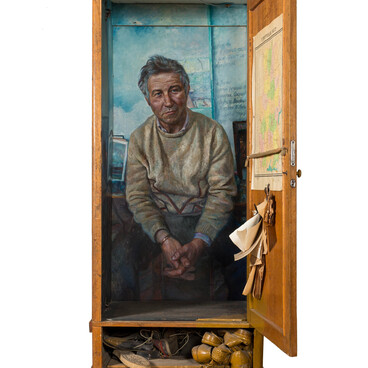The collection of the Ludwig Museum houses a series of 25 figurines titled “Life Is Everywhere”. The figurines are made of porcelain which is typical of small sculpture. The series was created by an artist Grigory Bruskin who signs his works as Grisha Bruskin.
In his art, Bruskin often addresses two themes — the myths of Socialism and Judaism. He uses various arts media, such as painting, sculpture, and textile.
Bruskin chose the images for the “Life Is Everywhere” series from his own 1986 painting “Fundamental Lexicon”. The 32-panel painting features over 100 figures carrying Soviet symbols, such as a flag, a coat of arms, banners with slogans, a calendar, and other objects.
The painting became the main attraction at the Sotheby’s auction in Moscow in 1988. It was sold for a record £242,000 which was higher than the cost of works by recognized Soviet artists. Later, Bruskin used some of the “Fundamental Lexicon” elements to create an installation of porcelain figurines. The statues were produced at the Dulyovo porcelain works (previously known as the Kuznetsov factory) in the Moscow region.
The “Life Is Everywhere” series is a collection of typical characters of the Soviet period. The figurines include a pioneer, a doctor, and a worker. They hold bright contrasting objects, including a flag, a rifle, an order, a coat of arms, and others. For example, the figurine wearing a gas mask holds a model of a burning house, the general wearing a uniform demonstrates a model of a rocket, the teacher holds a portrait of Joseph Stalin, while the military officer shows the coats of arms of the Tajik and the Armenian Soviet Socialist Republics.
The colorless figurines symbolize the Soviet ideology which claimed that the socialist society was free of class distinctions, and that all citizens were equal and somewhat identical. The only individual characteristics which distinguished them were the allegorical professional attributes –– the bright and easily-recognizable objects which the figurines carry in their hands.
Grisha Bruskin was born in Moscow and studied at the Art Department of the Moscow Textile Institute. In the 1960s, he started to take part in modern art exhibitions organized by young artists. Over time, he moved from painting to sculpture, using bronze, metal, and porcelain. Nowadays, Bruskin lives and works in Moscow and New York City.
In his art, Bruskin often addresses two themes — the myths of Socialism and Judaism. He uses various arts media, such as painting, sculpture, and textile.
Bruskin chose the images for the “Life Is Everywhere” series from his own 1986 painting “Fundamental Lexicon”. The 32-panel painting features over 100 figures carrying Soviet symbols, such as a flag, a coat of arms, banners with slogans, a calendar, and other objects.
The painting became the main attraction at the Sotheby’s auction in Moscow in 1988. It was sold for a record £242,000 which was higher than the cost of works by recognized Soviet artists. Later, Bruskin used some of the “Fundamental Lexicon” elements to create an installation of porcelain figurines. The statues were produced at the Dulyovo porcelain works (previously known as the Kuznetsov factory) in the Moscow region.
The “Life Is Everywhere” series is a collection of typical characters of the Soviet period. The figurines include a pioneer, a doctor, and a worker. They hold bright contrasting objects, including a flag, a rifle, an order, a coat of arms, and others. For example, the figurine wearing a gas mask holds a model of a burning house, the general wearing a uniform demonstrates a model of a rocket, the teacher holds a portrait of Joseph Stalin, while the military officer shows the coats of arms of the Tajik and the Armenian Soviet Socialist Republics.
The colorless figurines symbolize the Soviet ideology which claimed that the socialist society was free of class distinctions, and that all citizens were equal and somewhat identical. The only individual characteristics which distinguished them were the allegorical professional attributes –– the bright and easily-recognizable objects which the figurines carry in their hands.
Grisha Bruskin was born in Moscow and studied at the Art Department of the Moscow Textile Institute. In the 1960s, he started to take part in modern art exhibitions organized by young artists. Over time, he moved from painting to sculpture, using bronze, metal, and porcelain. Nowadays, Bruskin lives and works in Moscow and New York City.



